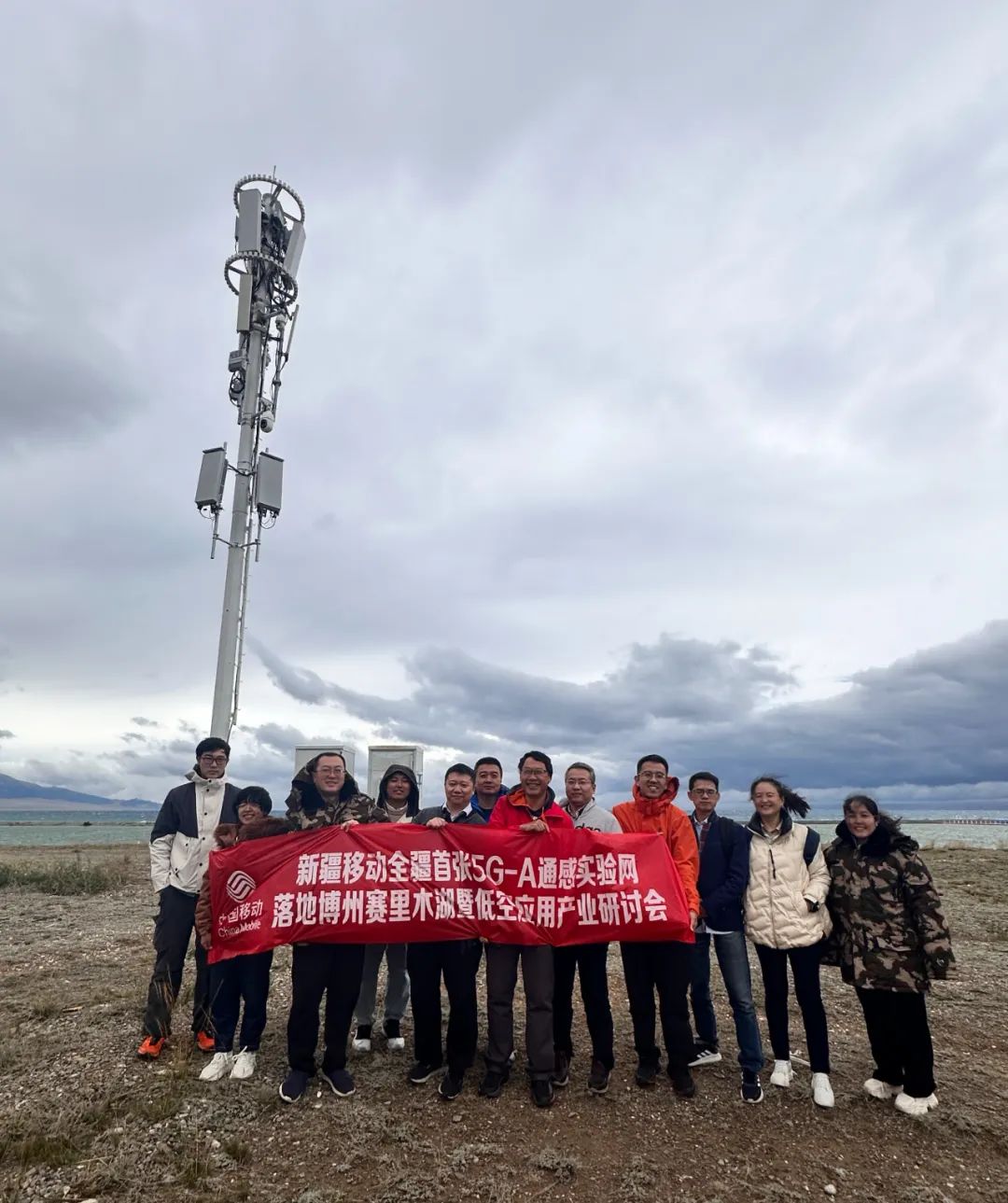After preliminary network construction, technical experiments and intensive preparations, on August 29, 2024, Xinjiang's first 5G-A synaesthesia experimental network landed in the Sailimu Lake Scenic Area in Bozhou. At the same time, the low-altitude economic industry application seminar organized by Bozhou Branch of China Mobile Xinjiang Company was successfully held in the Sailimhu Management Committee.

With the theme of "taking the opportunity to explore the application scenarios of low-altitude economic industries, strengthening and expanding characteristic advantageous industries, focusing on improving scientific and technological innovation capabilities, and promoting the transformation and upgrading of traditional industries", this seminar focused on new technologies and achievements in the field of low-altitude industries, and promoted the in-depth integration of industry, university and research and the transformation and upgrading of the industrial structure of Bozhou, Xinjiang. Experts from the Sailimhu Management Committee, CTTL-Terminal Labs of China Academy of Information and Communications Technology (hereinafter referred to as "CTTL-T of CAICT") , China Mobile Xinjiang Company, China Mobile Design Institute, China Electronics Technology 54 Institute, Xinjiang Airport Group and other units gathered together to discuss the industrial application of artificial intelligence + low-altitude economy in cultural tourism, emergency and other industries.
In February 2021, the low-altitude economy was written into the "National Comprehensive Three-dimensional Transportation Network Planning Outline". The Central Economic Work Conference held at the end of last year proposed to "build a number of strategic emerging industries such as biomanufacturing, commercial aerospace, and low-altitude economy". At this year's National People's Congress and the National People's Congress, "actively building new growth engines such as biomanufacturing, commercial aerospace, and low-altitude economy" was written into the government work report. As a strategic emerging industry, the low-altitude economy has a long industrial chain, covering various industries such as aircraft R&D and manufacturing, low-altitude flight infrastructure construction and operation, and flight service support. The application scenarios are abundant, including not only the traditional general aviation format, but also the integration of low-altitude production and service methods supported by UAVs; It is widely used in industry, agriculture, service industry and other fields, and plays an important role in building a modern industrial system, and has a very broad development space.
The first 4.9G all-in-one experimental network in Xinjiang, led by China Mobile Xinjiang Company and Bozhou Mobile Branch, provides high-speed wireless communication services while realizing global and high-precision low-altitude perception, and can realize low-altitude electronic fence intrusion warning, UAV flight trajectory tracking and other functions, and can support the test and verification of various needs such as low-altitude logistics, UAV inspection, and UAV security in the Sailimu Lake Scenic Area.
In this seminar, the participating experts focused on the scenario exploration and practice of artificial intelligence empowering the low-altitude economy. The artificial intelligence large model industry is developing rapidly, and its capabilities in the field of target detection and recognition have been greatly improved. Experts at the meeting said that in low-altitude scenarios, artificial intelligence algorithms can bring beneficial improvements to geological disaster early warning, forest fire early warning, road crack detection, rail/power defect detection, forest fire identification, smoke recognition, debris flow landslide identification and other scenarios, and help the high-quality development of local governments, parks, cultural tourism and other industries.
Wang Jingyao, director of the Digital Ecological Development Department of the CTTL-T of CAICT, said that artificial intelligence combined with low-altitude economy has great application prospects. In the future, it is hoped that relying on the first 4.9G synaesthesia integrated pilot area of Sailimu Lake in Xinjiang, we will continue to explore the practice of artificial intelligence + low-altitude economic industry, accumulate relevant experience, and empower the exploration of low-altitude economic scenarios across the country.
Subsequently, the foundry plan will cooperate with Xinjiang Mobile and relevant departments of the Bozhou government, combined with the characteristic terrain, network environment, industrial support, application scenarios and other aspects of Bozhou, and plan an artificial intelligence + unmanned economic application incubation base according to local conditions, so as to effectively promote the implementation of low-altitude new technologies, new markets and new scenarios, and create an exemplary "Bozhou model".
For inquiries and cooperation, please contact: nbd@caict.ac.cn.